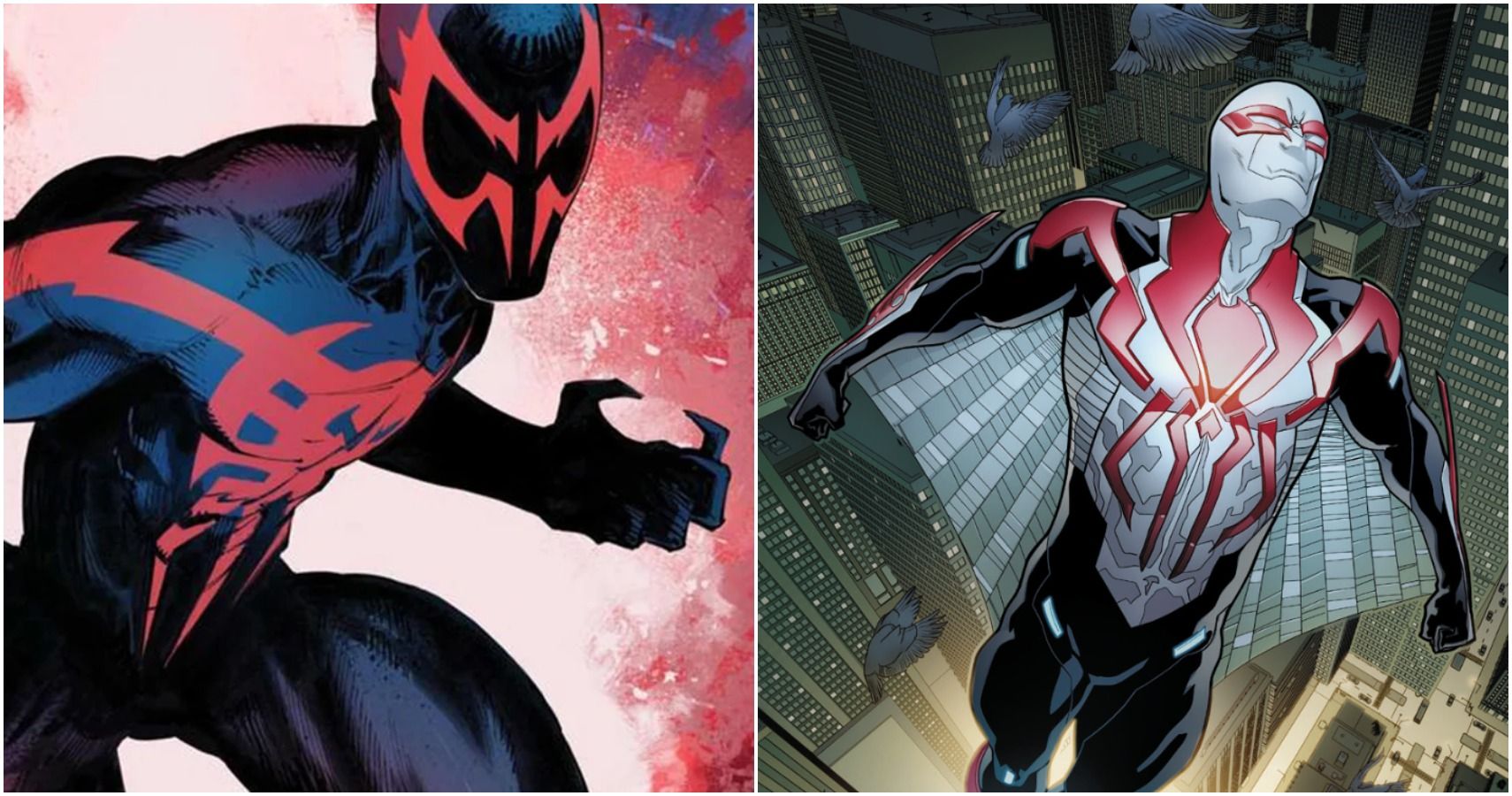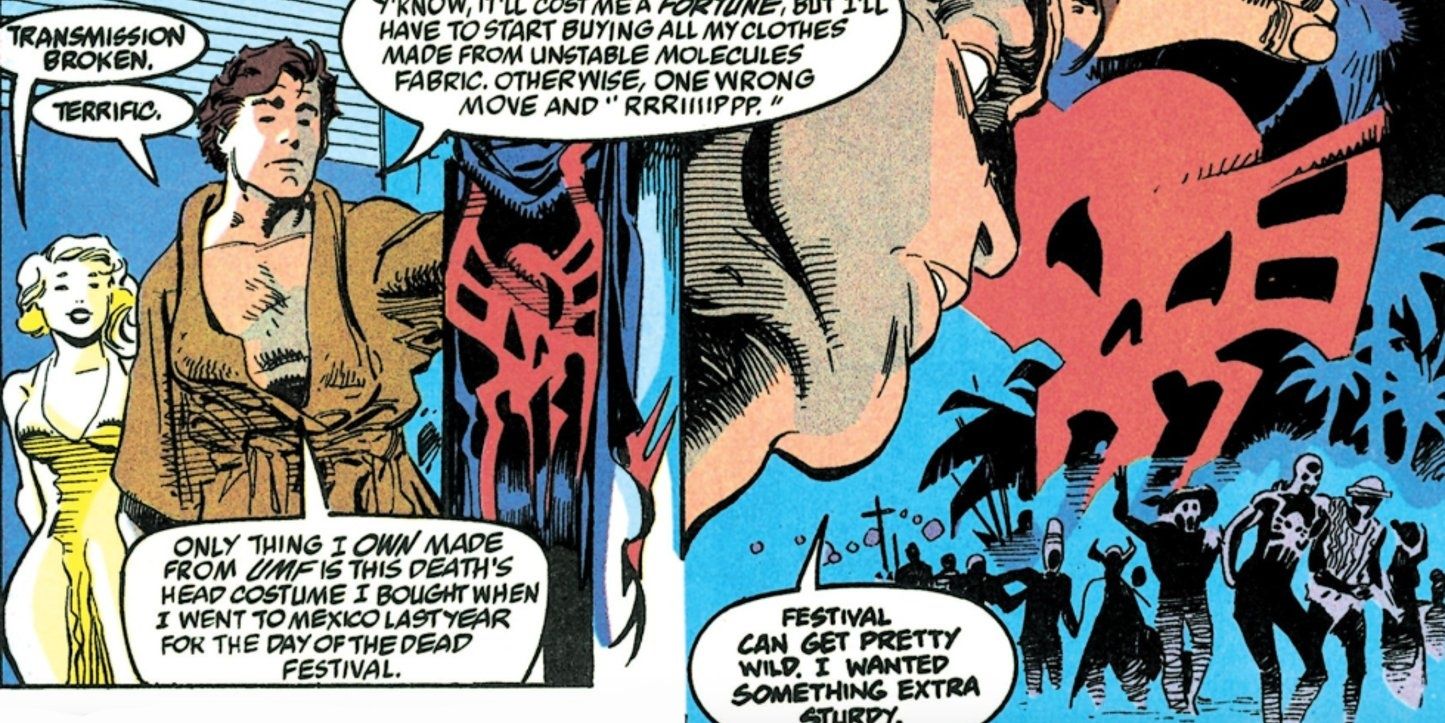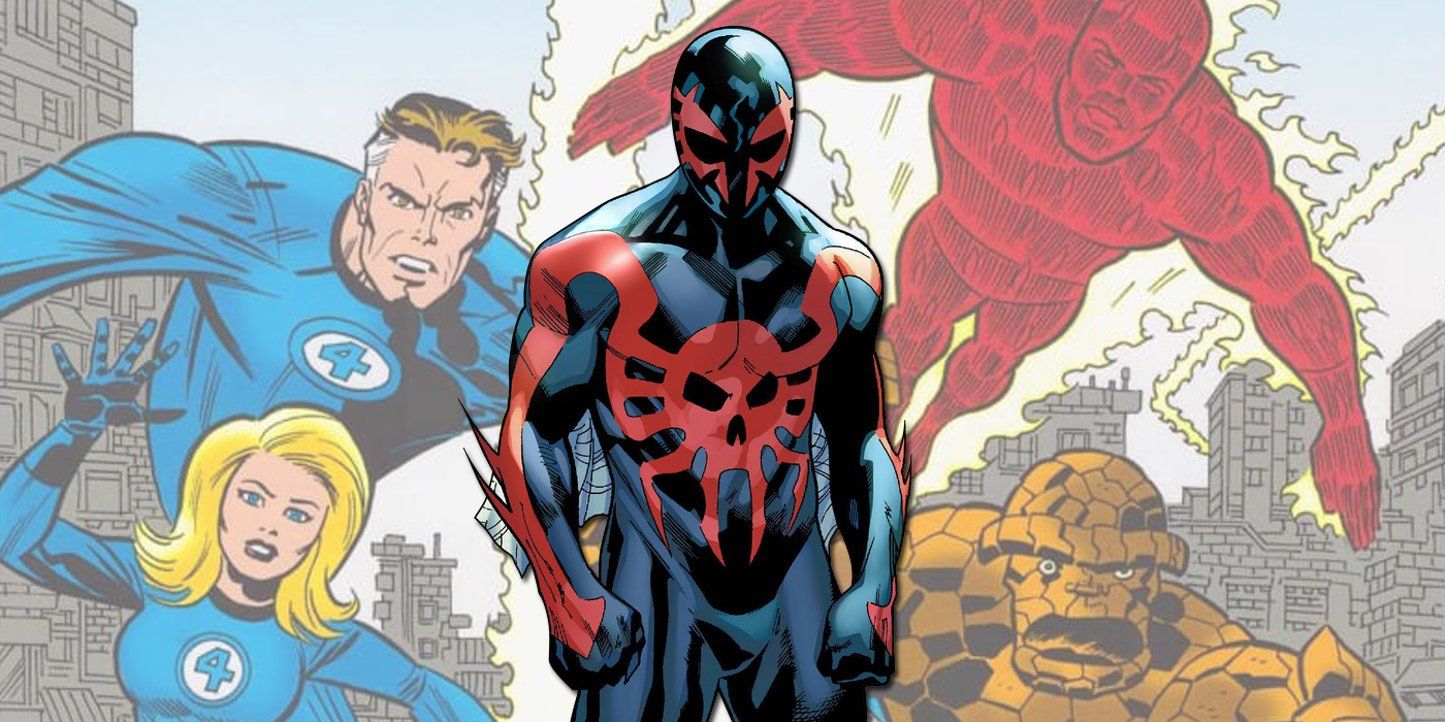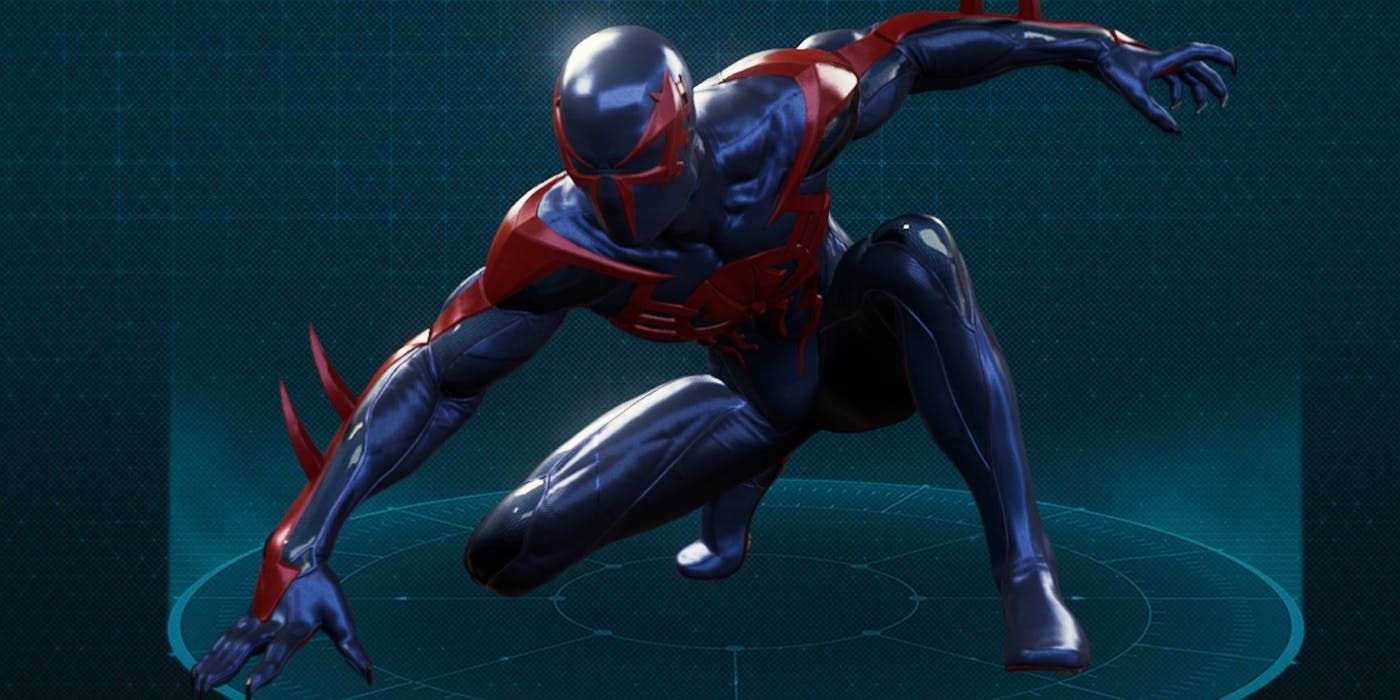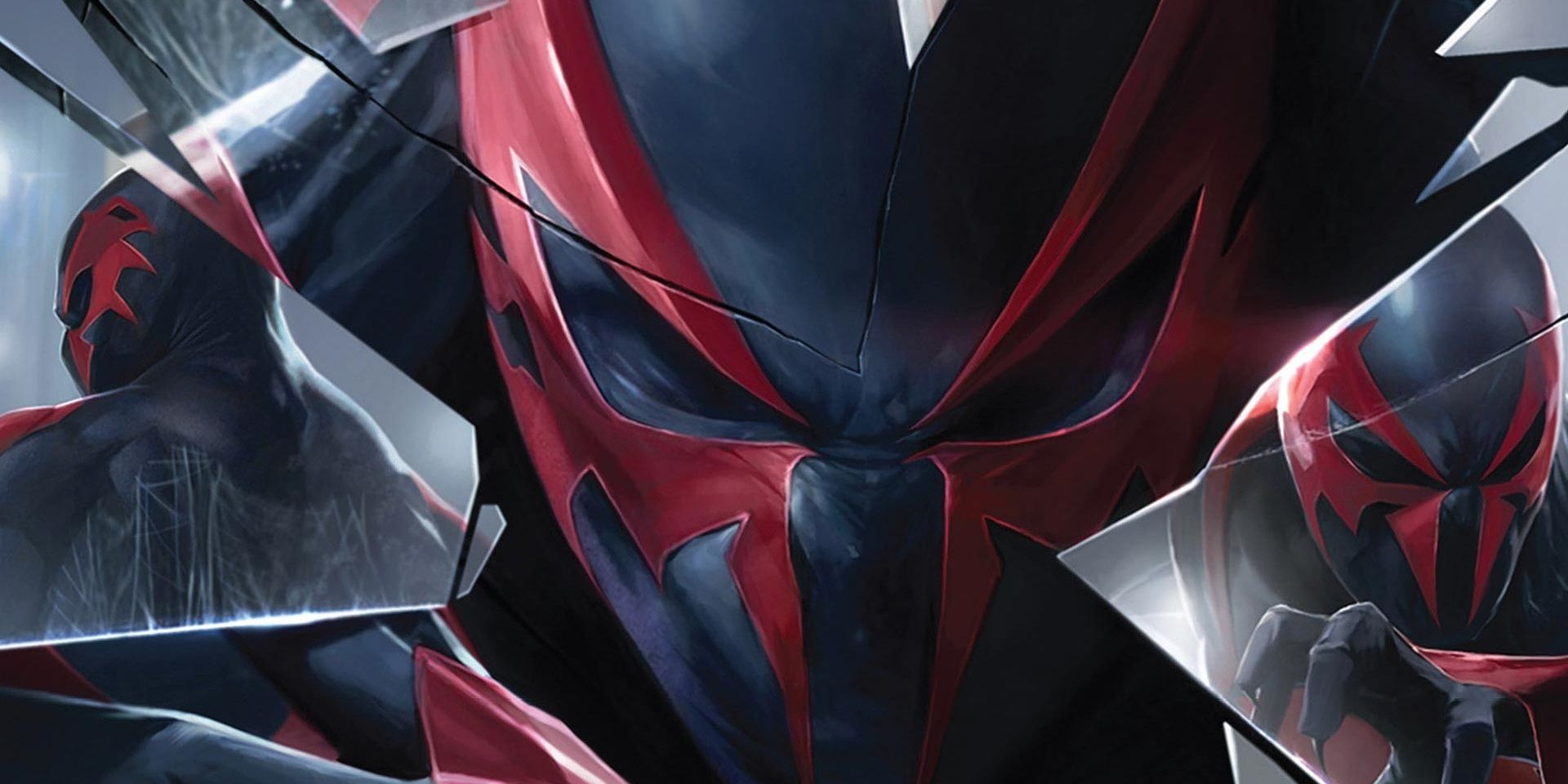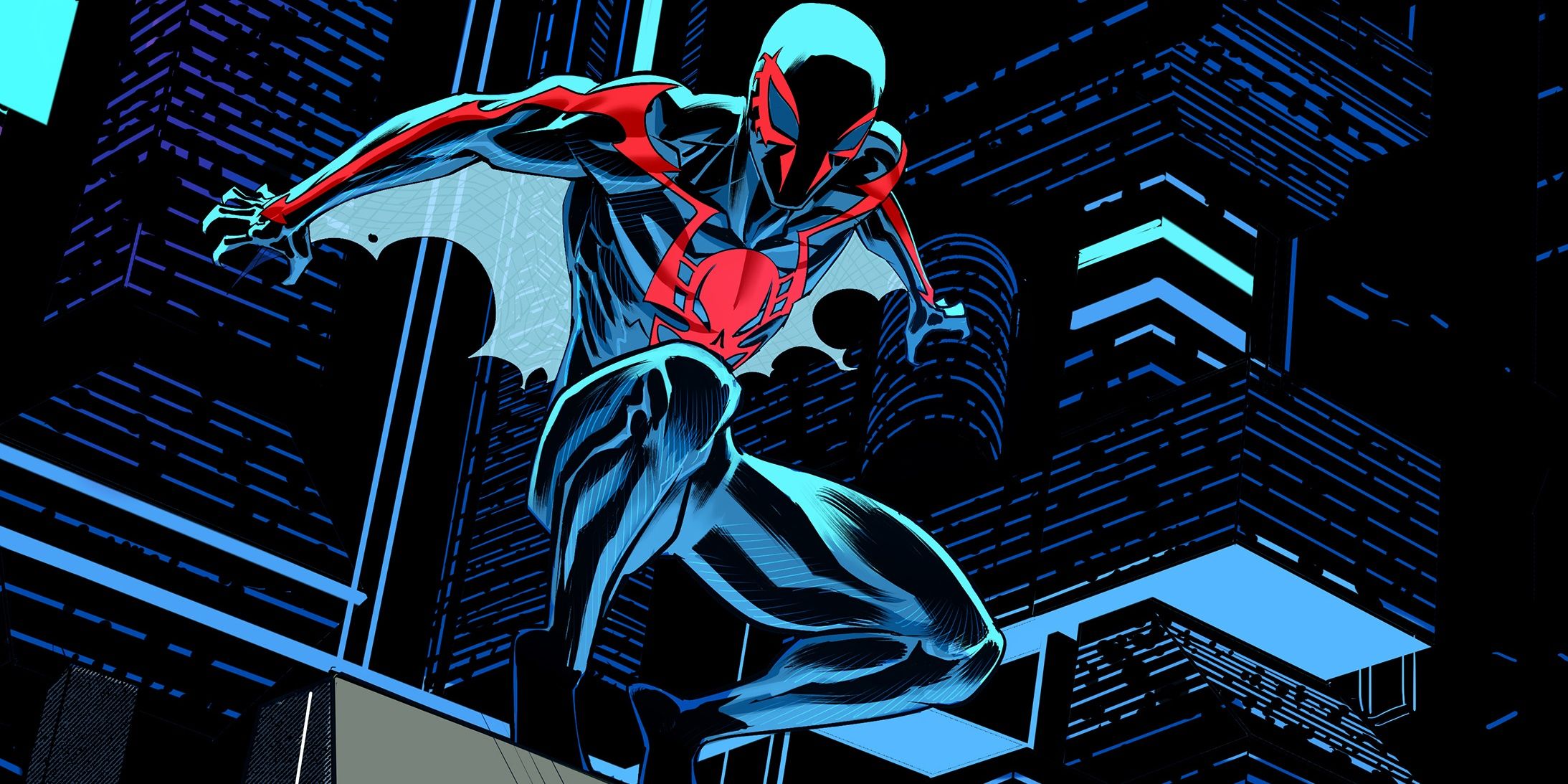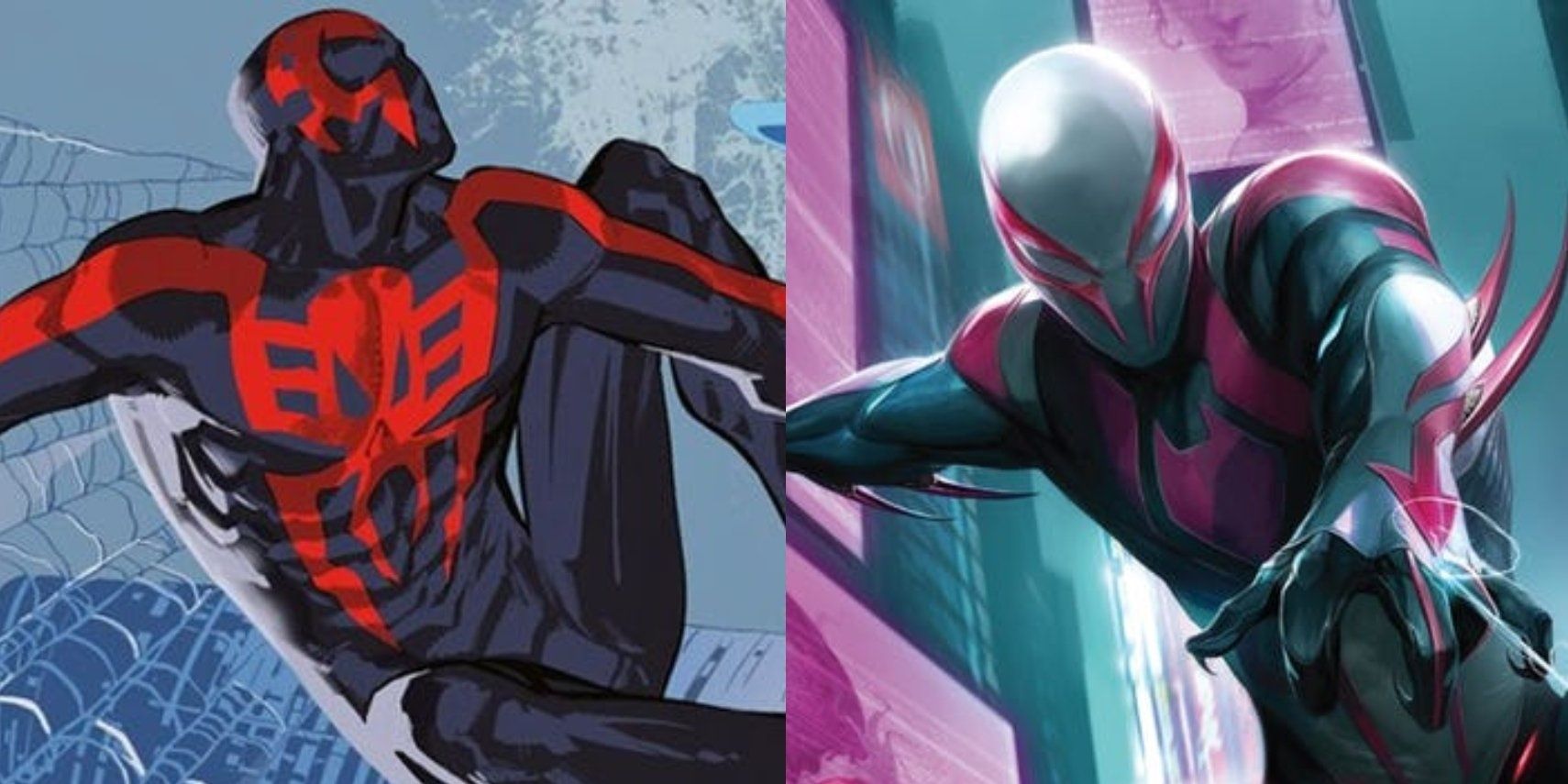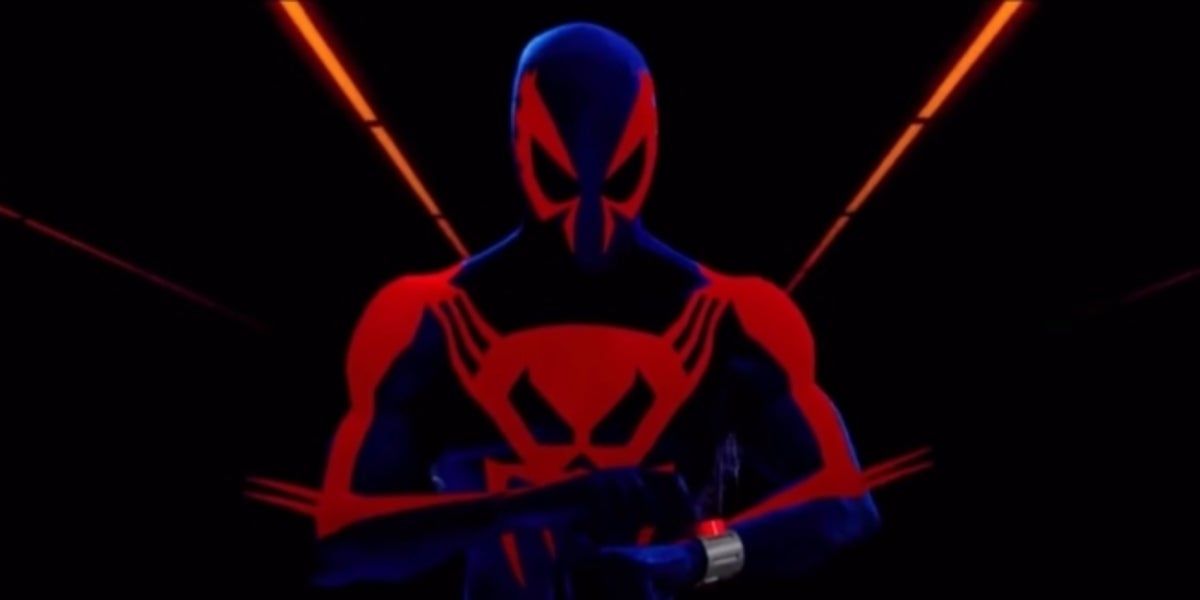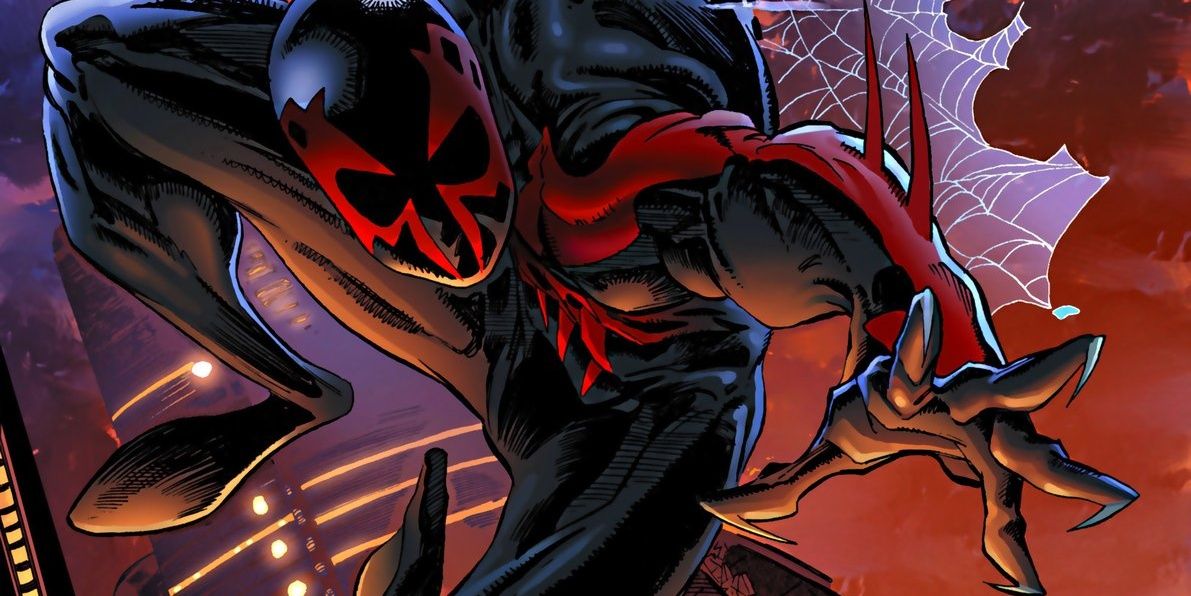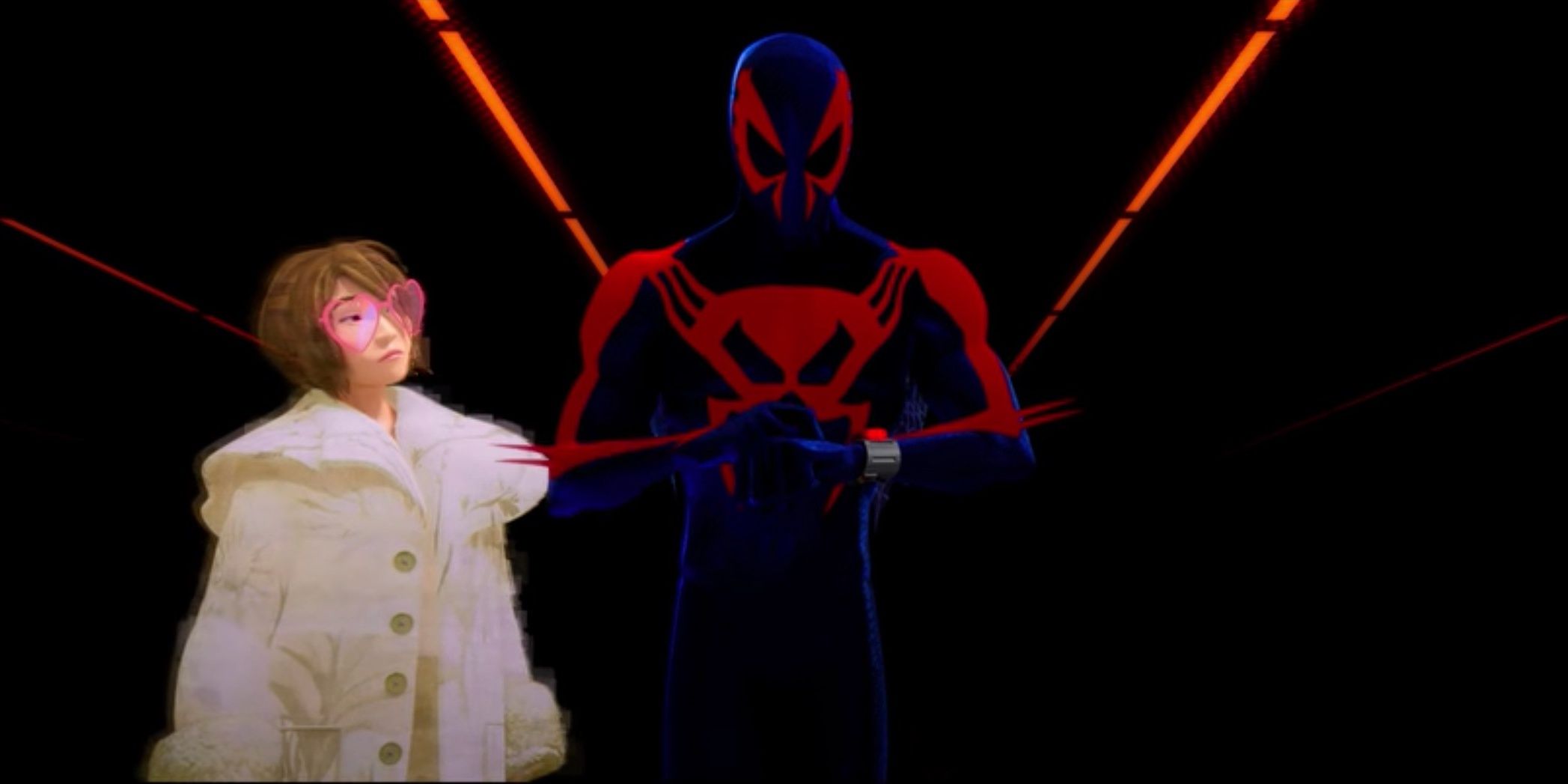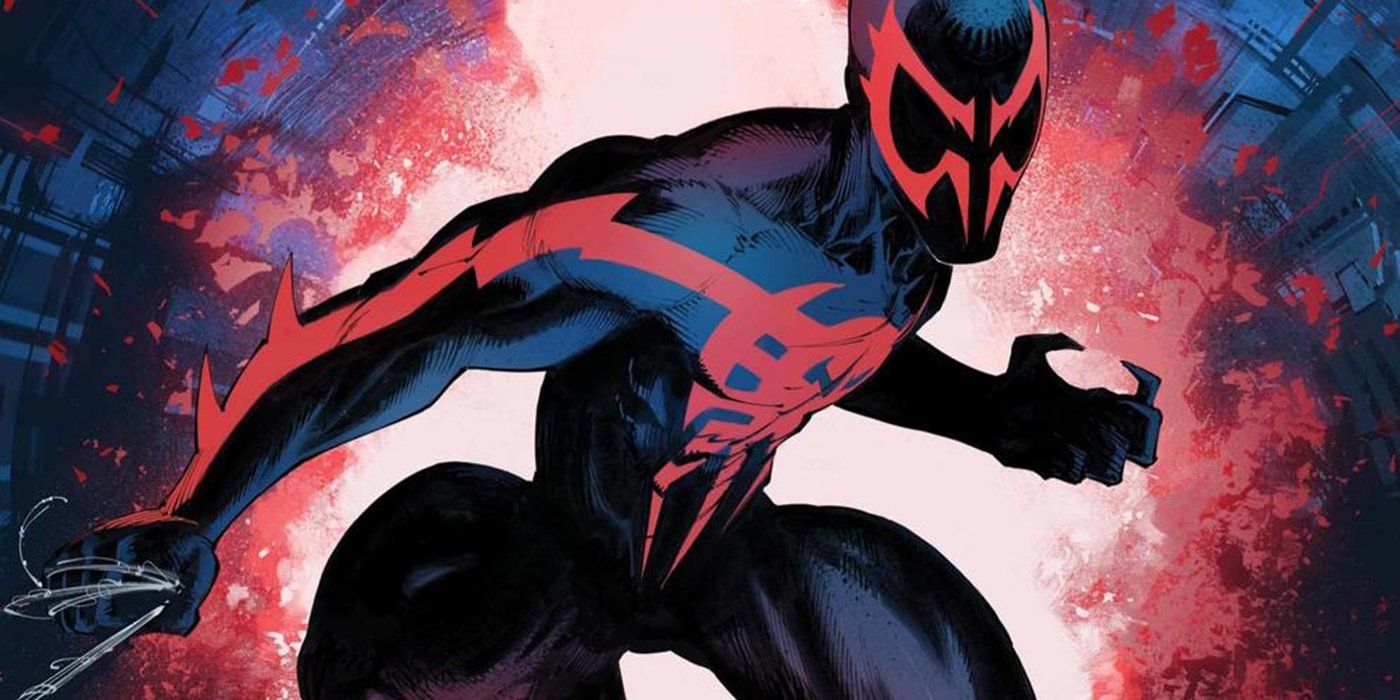In a world filled with so many different Spider-people, it's hard to narrow down what the best suits are. One that typically falls into the elite category of Spidey suits is that of the futuristic Miguel O'Hara, more commonly known as Spider-Man 2099.
We've had plenty of recent interactions with the 2099 suit, including his late-game appearance in Spider-Man: Into The Spider-Verse and even its playable version in Marvel's Spider-Man PS4 game. Even though we can all agree that his suit is one of the most stunning in the Spider-Verse, how much do we really know about it? Well, these 10 details are all things that any Marvel fan should know about Miguel's suit.
10 Originally Made For Day Of The Dead Festival
The Spider-Man 2099 costume has one of the more unique origin stories of any Spidey suit we've seen before. Originally, Miguel O'Hara bought the costume for the famous Day of the Dead Festival celebrated annually throughout Mexico. That's the main reason the spider on the front of the suit features an easily recognizable skull design, a symbol typically corrolated with the celebration. Once he was called to action, Miguel effortlessly transformed it into his very own Spider-Man suit.
9 Unstable Molecule Fabric
According to Miguel, the Day of the Dead Festival can actually get pretty rough, so he wanted his suit to hold up. Taking some inspiration from Reed Richards and the Fantastic Four, he chose a suit made out of unstable molecule fabric. This type of fabric is wildly popular throughout the Marvel Universe and is the key substance in plenty of superhero costumes.
The fabric has incredible durability, making it nearly impossible to destroy. Due to the fabric's insane strength, it could explain why the 2099 suit looks almost metallic upon first glance. The unstable molecule fabric actually plays a much more important role in the suit specifically for Miguel, but we'll get to that later.
8 It Doesn't Make The Webs, Miguel Does
In a majority of Spider-Man suits, the web-shooters are a key element of what makes the costume either most effective or tech-infused. However, that's pretty much the exact opposite in the case of Miguel O'Hara.
Much like Tobey Maguire's version of Spider-Man, Spider-Man 2099 actually creates his webs organically. After the experiment gone awry genetically altered Miguel's DNA to be spliced with a spider, he developed a myriad of special and enhanced abilities. Thanks to that he can create a web-like substance that is released out of his wrist, entirely separate from his suit.
7 No Actual Eye Lenses
There seems to be a pattern with Spider-Man 2099's suit in the sense that it differs from most other Spider-people's suit in a number of major ways. On most Spidey suits, there's a clear presence of eye lenses that interact with the wearer's actual eyes. Again, that's completely different in the case of Miguel's suit. If you look close enough, you can see that there's not actually any kind of lense, but instead just an outline of one created by the suit's red detail. It also probably has to do with the fact that Miguel doesn't have any type of Spidey sense, but instead just enhanced vision.
6 Web Cape
"Spider-Man doesn't wear a cape." Well, that's at least what Peter B. Parker said. Clearly, he hasn't yet visited the year 2099 and met Miguel O'Hara's Spider-Man. After taking up the mantle of Spider-Man, Miguel added a patch of light byte material he got from a Thor worshiper to fashion his very own cape.
This cape essentially acts as a glider for Miguel, allowing him to sail above buildings using wind currents to fly. The functionality of the cape is strikingly similar to the under-arm wing flaps of many other Spidey suits. So, contrary to popular belief, Spider-Man actually does wear a cape.
5 There Are Multiple Versions
Since the creation of the multiverse within the Marvel Universe, the crossover of Spider-people has become a normal occurrence. That's allowed us to explore the massive number of different versions of Earth that exists, as well as all of the Spider-Men of each of those Earths.
Throughout these different Earths, we've seen various remakes of Miguel O'Hara's original suit. For example, on Earth-TRN461, Peter Parker created the 2099 suit using S.H.I.E.L.D technology for the Miguel O'Hara of Earth TRN389. While this multiverse of suits showcases plenty of different technological advancements, they do stay true to the original suit design we've come to know.
4 The Second Edition
The Peter Parker-made suit is typically considered the second version of the Spider-Man 2099 costume. Like the original, this suit utilizes unstable molecule fabric to increase durability. However, it actually blends that fabric with Kevlar to make it even stronger. Across the board, the second version of the 2099 suit is far more advanced and laced with technological elements.
This suit also features boot jets similar to the ones on Tony Stark's armor, creating no real need for the web cape anymore. It's also fit with arachnid-shaped explosives that shoot from the wrist, along with optic sensors that cater to Miguel's enhanced vision and hearing. This new-and-improved "White" suit has all the gadgets that the first version lacked, but it does lose some of the classic shine and appeal of the original suit.
3 Conforms To Miguel's Abilities
Earlier, we mentioned that the unstable molecule fabric played a critical role specifically for Miguel's suit beyond its unbelievable strength and durability. When the accident changed his DNA, he developed both fangs and talons. Those talons are razor sharp and effective in combat, but also help him with his climbing ability.
Thanks to the unstable molecule fabrics, those talons actually have a chance to shine without any worry of the suit tearing at the fingers. As he is able to use them while wearing the costume, the talons essentially become part of the suit. Miguel's list of unique traits as Spider-Man continues to get longer and longer.
2 Lyla
Similar to the way Tom Holland's Spider-Man suit was completed with an internal A.I. system which he called "Karen", Miguel O'Hara has a female helper of his own. "Lyla," which appropriately stands for Lyrate Lifeform Approximation, helps Miguel with any problem you might imagine. Also, much like the A.I. systems of Peter Parker and Tony Stark, Lyla has near-unlimited access in her abilities in the sense of accessing worldwide technology and databases. Her many functionalities help Miguel along as he faces problem after problem in his time as Spider-Man.
1 The Color
Finally, we've reached one of the most common misconceptions across all versions of Spider-Man. While the suit obviously comes off as being blue, it's actually commonly referred to as a black suit. Regardless of the description, it's pretty undeniable that the suit is actually blue.
After years of confusion, descriptions of the suit were eventually changed and it eventually became known as a blue suit. Maybe it was the metallic shine of the suit that made it appear black to some, but most people can agree that the suit is blue. Plus, it was always supposed to be a flipped color scheme of Peter Parker's original suit, which wasn't red and black, but obviously red and blue.

